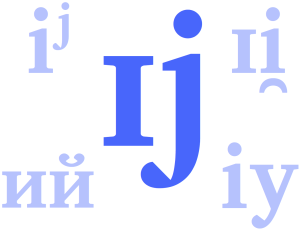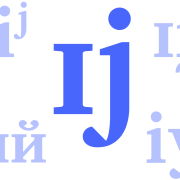Seeing the FLEECE diphthong
 When I teach groups, especially groups of students, they normally have to be encouraged to speak aloud. So it took me by surprise when, on several occasions in the past year, groups of my students simultaneously chanted aloud an example I was discussing, without my having asked them. This happened with separate groups of Italian and Japanese students. On each occasion, I was referring them to a page in their printed teaching materials; I pointed at the relevant example in my own copy and said, ‘Can you see it?’ Each time, they suddenly chanted the example. Each time, it took me by surprise.
When I teach groups, especially groups of students, they normally have to be encouraged to speak aloud. So it took me by surprise when, on several occasions in the past year, groups of my students simultaneously chanted aloud an example I was discussing, without my having asked them. This happened with separate groups of Italian and Japanese students. On each occasion, I was referring them to a page in their printed teaching materials; I pointed at the relevant example in my own copy and said, ‘Can you see it?’ Each time, they suddenly chanted the example. Each time, it took me by surprise.
They had misinterpreted my question as ‘Can you say it?’ Native English-speaking students would not have done this.
We’re all aware that non-natives speak differently from natives (regardless of the language). It’s a less obvious fact that non-natives hear differently. In general, non-natives simply don’t have native pronunciations in their minds. Italian and Japanese speakers don’t typically have in their minds the authentic English FLEECE vowel of see. Rather, they produce – and expect to hear – a vowel like their own ‘i’, pure and unchanging, ie a monophthong. But see it is sɪjɪt. When my students heard my FLEECE diphthong ɪj, they interpreted it as the FACE diphthong of say.
A contributing factor is the tendency of non-native FACE to be too close. If the FACE vowel is stored in your head as ej or ei, rather than as the native ɛj, then your productions and your perceptions may both confuse FACE and FLEECE. (This kind of production is demonstrated in my Phrase of the Week post where a Ukrainian speaker pronounces pain as uncomfortably like penis.)
The established type of transcription system can reinforce these problems. It encourages the non-native to believe that FLEECE is a monophthong, ‘/i:/’. Among the people I teach and coach, the majority of those who use dictionary transcriptions assume wrongly that these are phonetically accurate. Some are shocked when I point out that FLEECE’s diphthongal characteristics are not some revolutionary fantasy of mine but are well known among phoneticians. Here’s Henry Sweet’s A New English Grammar on FLEECE in 1900:
In the south of England it is diphthongized into (i) [by which Sweet means the KIT vowel] followed by very close (i), which is nearly the sound of the consonant (j) in you, so we write (sij), etc. (p. 232).
Here’s John Wells on FLEECE in Accents of English, 1982:
the general phonetic nature of this vowel could be adequately represented as /i/, as /iː/, or indeed as /ɪi/, /ɪj/ (p. 140)
and Gussenhoven & Broeders (English pronunciation for student teachers, 2nd ed., 1997):
RP /iː/, as in piece, sea, is a close, front, unrounded vowel. It is typically somewhat diphthongised, much like [ɪi] (p. 95)
Phonetically, the nucleus of the FLEECE diphthong varies in the [i-ɪ-e] region depending on speaker, speech rate and phonetic context. Like the other English diphthongs, it may be compressed into a monophthong in running speech. As an illustration of ɪj, here from the Oxford Learner’s Dictionary online is knee, nɪj:
And knit, nɪt:
Replacing the n and virtually all of the vowel of knit with the beginning of knee results in what is still an entirely acceptable knit:
Phonologically, FLEECE certainly belongs to the same class as FACE, PRICE and CHOICE. In terms of linking, FLEECE, FACE, PRICE and CHOICE connect to a following vowel with j (unless hard/glottal attack is chosen), eg key‿event, day‿out, buy‿anything, enjoy‿it. (I, like Henry Sweet, consider the j to be intrinsic to all four of these vowels. For further analysis see this post.)
In terms of phonotactics, FLEECE goes with FACE, PRICE and CHOICE (plus GOOSE, GOAT and MOUTH) to make up the class of English vowels which may occur before another vowel within a morpheme, eg museum, chaos, giant, voyage (ruin, oasis, power). By contrast, the set of ‘long monophthongs’ in the established transcription system (FLEECE, PALM/START, GOOSE, NURSE, THOUGHT/NORTH) do not constitute any natural class whatsoever.
(The CUBE dictionary which I co-edit has ɪj as a default for FLEECE, though ij is defensible, highlighting the diphthong’s change in sonority rather than a change in quality. CUBE allows the weak offglide to be shown either as j or as non-syllabic i̯.)
As with FLEECE, the established transcription of FACE can be misleading for non-natives, many of whom make it too close. In my experience, the majority of those who refer to dictionary transcriptions see the symbol ‘e’ and simply interpret it as the ‘e’ of their language. This applies not only to ‘/eɪ/’ for FACE but also to ‘/e/’ for DRESS. The result is non-native FACE which sounds too much like native FLEECE, and non-native DRESS which sounds too much like native KIT.
The following clip sounds like a native SSB English speaker saying ‘saw this’:
But it’s a Japanese speaker saying soo des, which means ‘that’s right’. This shows how similar Japanese e is to English KIT. I find that students and clients from many language backgrounds often sound more native if they can be persuaded to use their ‘e’ rather than their ‘i’ in KIT words. For DRESS, on the other hand, they typically need to be encouraged to make an opener vowel than they’re accustomed to; in this, the symbol ɛ can provide a bit of assistance. It’s always harder for me to persuade those clients who believe religiously in the established symbols /iː/, /ɪ/, /e/, /eɪ/.
The FLEECE-KIT contrast is notoriously hard to teach to all those whose mother tongue has only one close front vowel, i. These two English vowels differentiate many words, including famous pairs like sheet-sh*t, piece-p*ss, beach-b*tch. As I’ve just suggested, it can help many learners and users to coax them in the direction of their ‘e’ for KIT.
For FLEECE, I find it hard to use ‘length’ as a teaching tool with those whose mother tongue simply lacks a long-short contrast, like Spanish, Russian and French. But these three languages do contain both i and j. I find it can be effective to persuade such speakers that the FLEECE vowel has two parts, i followed by j. (Russian and French actually contain ij, written ий and ille, though not in the same range of phonetic contexts as English FLEECE.)
I find that sɪjing the FLEECE diphthong often makes things easier.

